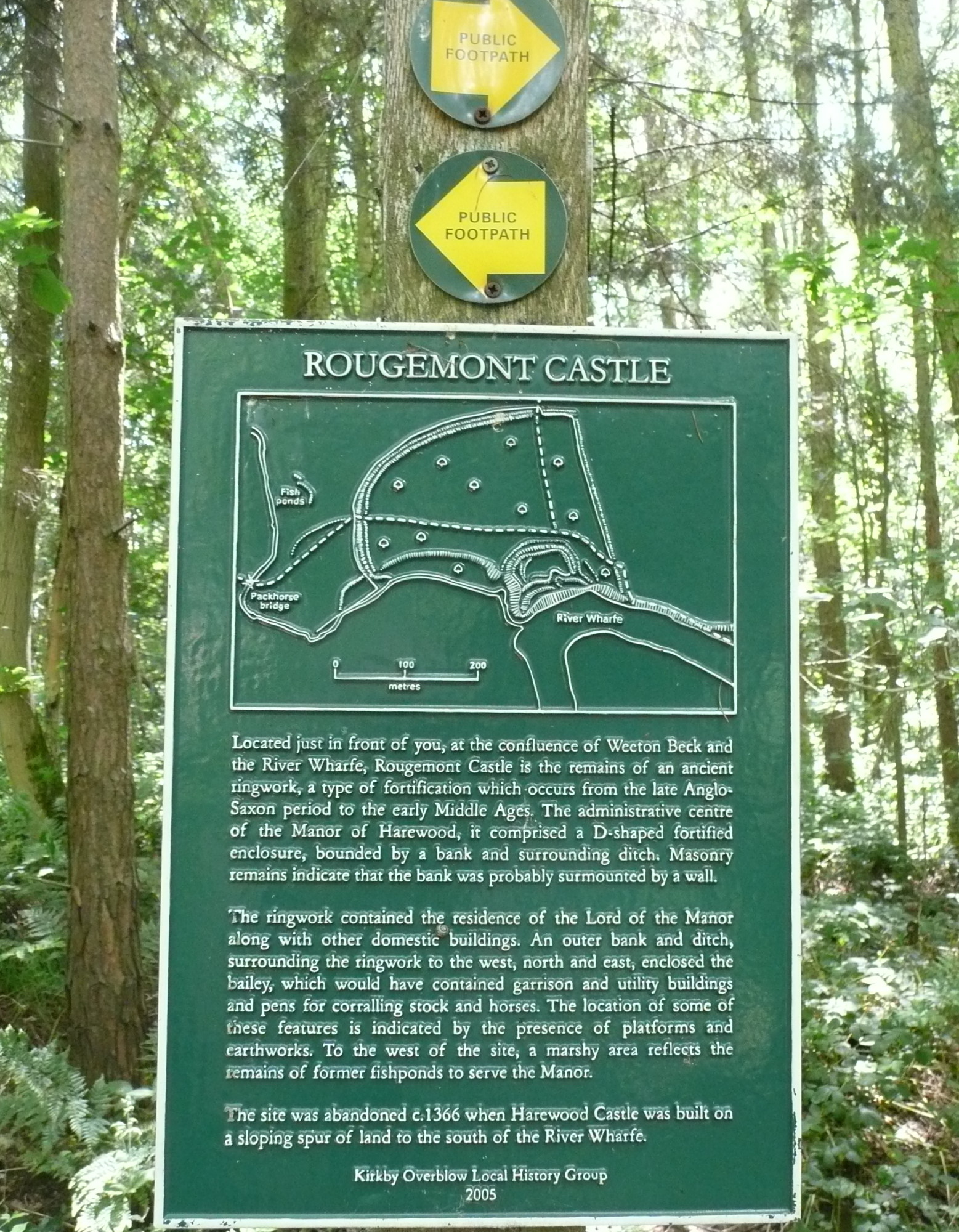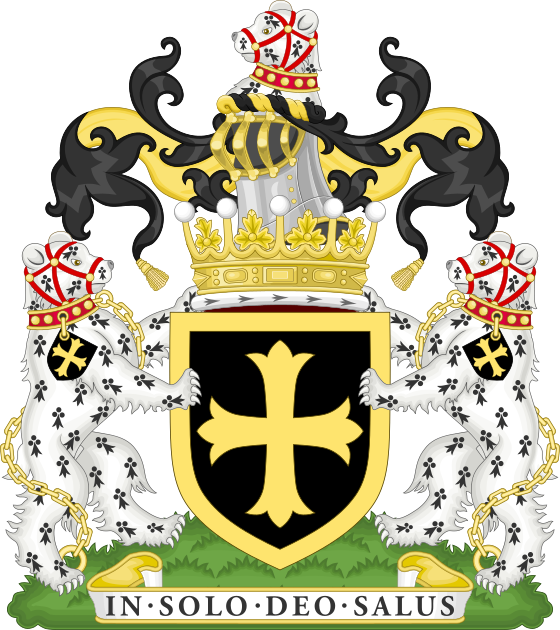|
Weeton, North Yorkshire
Weeton is a village and civil parish in the Harrogate district of North Yorkshire, England. The name is first attested in the Domesday Book of 1086 as ''Widetun(e)''/''Wideton(e)'' and seems to derive from Old English ''wiðig'' 'willow' and ''tūn'' 'settlement, estate, farm', thus meaning 'willow farm'. Located between Otley and Harrogate it is close to the River Wharfe. Largely populated by commuters working in Leeds and Bradford, it is accessed from the A61 (Leeds-Harrogate road) or the A658 (Harrogate-Bradford road). The parish also contains the village of Huby, approximately north-west of Weeton, where Weeton railway station is situated. Weeton has no pub, shop or post office. It is home to the Weeton Agricultural Show and Weeton and Huby Cricket Club. The village church is called St Barnabas and was built at the cost of the Earl of Harewood. The foundation stone was laid in 1851 by the Bishop of Ripon and construction was completed in 1852. The nearby parsonage was ... [...More Info...] [...Related Items...] OR: [Wikipedia] [Google] [Baidu] |
Harrogate (borough)
The Borough of Harrogate is a local government district with borough status in North Yorkshire, England. Its population at the census of 2011 was 157,869. Its council is based in the town of Harrogate, but it also includes surrounding towns and villages. This includes the cathedral city of Ripon and almost all of the Nidderdale Area of Outstanding Natural Beauty. The district was formed on 1 April 1974, under the Local Government Act 1972, as a merger of the Masham and Wath rural districts, and part of Thirsk, from the North Riding of Yorkshire, along with the boroughs of Harrogate and the city of Ripon, the Knaresborough urban district, Nidderdale Rural District, Ripon and Pateley Bridge Rural District, part of Wetherby Rural District and part of Wharfedale Rural District, all in the West Riding of Yorkshire. The district is part of the Leeds City Region, and borders seven other areas; the Craven, Richmondshire, Hambleton, Selby and York districts in North Yorkshire and th ... [...More Info...] [...Related Items...] OR: [Wikipedia] [Google] [Baidu] |
Weeton Railway Station
Weeton railway station serves the villages of Weeton and Huby in North Yorkshire, England. It is located on the Harrogate Line north of Leeds and operated by Northern who provide all passenger train services. History The Leeds and Thirsk Railway was authorised in 1845, and built in stages. The section between and ''Weeton'' opened on 1 September 1848. On 9 July 1849, the final section of the original L&TR main line was formally opened, between Weeton and Leeds. The station at Weeton was described as ''Weeton for Ormscliff Crags'' in some timetables. Facilities The station is unstaffed, but has ticket machines in place to allow intending passengers to buy prior to boarding the train. There are only basic shelters on each platform, but there are passenger information screens in place and a public address system to provide train running information. Neither platform is DDA-compliant, as the Leeds one has steps to it and access to the Harrogate one is via a steep pathway. ... [...More Info...] [...Related Items...] OR: [Wikipedia] [Google] [Baidu] |
Ringwork
A ringwork is a form of fortified defensive structure, usually circular or oval in shape. Ringworks are essentially motte-and-bailey castles without the motte. Defences were usually earthworks in the form of a ditch and bank surrounding the site. Ringworks originated in Germany in the 10th century as an early form of medieval castle and at first were little more than a fortified manor house. They appeared in England just prior to the Norman conquest and large numbers were built during the late 11th and early 12th centuries. More elaborate versions (such as Stansted Mountfitchet Castle) comprise a ringwork and bailey, the ringwork replacing the more usual motte and the bailey acting as a military stronghold. A survey published in 1969 identified 198 ringwork castles in England and Wales, with a further 50 sites that were considered to possibly be ringworks. D. J. Cathcart King and Leslie Alcock Leslie Alcock (24 April 1925 – 6 June 2006) was Professor of Archaeology at the ... [...More Info...] [...Related Items...] OR: [Wikipedia] [Google] [Baidu] |
Rougemont Castle, Weeton
Rougemont Castle in the manor of Harewood, in the parish of Weeton, North Yorkshire, England, is a ruined ringwork castle, now largely hidden within over-grown woodland, located to the south east of the village of Weeton, above the north bank of the River Wharfe, where the river turns in a right-angle at its confluence with Weeton Beck. No above-ground structure survives but the earthwork features remain visible of building platforms, ditch system, outer enclosure and fish ponds. History It was the seat of the de Lisle family, of which Robert de Lisle was in 1311 created Baron Lisle "of Rougemont", to distinguish him from the unrelated family of Baron Lisle of Wootton, Isle of Wight in Hampshire, created in 1299. It served as the administrative centre of the manor of Harewood and as the residence of the lord of the manor. The site was abandoned in about 1366 when the Lisle family built Harewood Castle nearby, of which much of the ruined stone structure survives, also hidden i ... [...More Info...] [...Related Items...] OR: [Wikipedia] [Google] [Baidu] |
William Grainge
William Grainge (25 January 1818 – 29 September 1895) was an English antiquarian and poet, and a historian of Yorkshire. He was born into a farming family in Dishforth and grew up on Castiles Farm near Kirkby Malzeard in the North Riding of Yorkshire, where he studied the archaeological site beneath the farm buildings, now known as Cast Hills settlement. Although he left school at age 12, he educated himself well enough to become a clerk to a solicitors' firm in Boroughbridge. He later established a bookshop in Harrogate and published numerous books on local history and topography, besides publishing a number of anonymous poems and discourses about local natural history. Grainge befriended the young John Farrah, and taught him botany and other natural history. Farrah was a grocer and an amateur botanist, who went on to become a Fellow of The Linnean Society and chairman of Yorkshire Naturalists' Union. After Grainge died, Farrah gave a lecture about Grainge's life and works, ... [...More Info...] [...Related Items...] OR: [Wikipedia] [Google] [Baidu] |
James Palmes
James Palmes (1826–1898) was the Archdeacon of the East Riding from 1892 until his death. Palmes was educated at University College, Durham and ordained in 1850. After a curacy in Leeds he held incumbencies at Weeton and Escrick Escrick is a village and civil parish in the Selby District of North Yorkshire, England. It was historically part of the East Riding of Yorkshire until 1974. It is approximately equidistant between Selby and York on what is now the A19 road. Hi .... He died on 3 June 1898. References 1826 births 19th-century English Anglican priests Alumni of University College, Durham Archdeacons of the East Riding 1898 deaths {{York-archdeacon-stub ... [...More Info...] [...Related Items...] OR: [Wikipedia] [Google] [Baidu] |
Bishop Of Ripon (modern Diocese)
The Bishop of Ripon was a diocesan bishop's title which took its name after the city of Ripon in North Yorkshire, England. History Though one ancient Bishop of Ripon is known, the modern see of Ripon was established in 1836 from parts of the dioceses of Chester and York. In the same year, the collegiate church in Ripon was raised to the status of cathedral church. From 1905, the bishops of Ripon were assisted by the suffragan bishops of Knaresborough in overseeing the diocese. In 1999, the see changed its name to the Diocese of Ripon and Leeds, reflecting the growing importance of Leeds, the largest city within the diocese and one of the fastest-growing cities in Britain. The diocesan bishop lived in Hollin House, a six-bedroom house in Weetwood, North Leeds, having moved there from Ripon in August 2008. The only bishop of ''Ripon and Leeds'' was John Packer, who signed ''John Ripon and Leeds'', retired on 31 January 2014. The Diocese of Ripon and Leeds was dissolved on 20 ... [...More Info...] [...Related Items...] OR: [Wikipedia] [Google] [Baidu] |
Earl Of Harewood
Earl of Harewood (), in the County of York, is a title in the Peerage of the United Kingdom. History The title was created in 1812 for Edward Lascelles, 1st Earl of Harewood, Edward Lascelles, 1st Baron Harewood, a wealthy sugar plantation owner and former Member of Parliament for Northallerton (UK Parliament constituency), Northallerton. He had already been created Baron Harewood, of Harewood, West Yorkshire, Harewood in the County of York, in 1796, in the Peerage of Great Britain, and was made Viscount Lascelles at the same time as he was given the earldom. The viscountcy is used as the courtesy title by the heir apparent to the earldom. Lascelles was the second cousin and heir at law of Edwin Lascelles, 1st Baron Harewood, Edwin Lascelles, who already in 1790 had been created Baron Harewood, of Harewood Castle in the County of York (in the Peerage of Great Britain). However, this title became extinct on his death in 1795. The Earl was succeeded by his son, the second Earl. H ... [...More Info...] [...Related Items...] OR: [Wikipedia] [Google] [Baidu] |
Huby, Harrogate
Huby is a village in the Harrogate district of North Yorkshire, England about five miles south-west of Harrogate. The village is on the A658 between Otley and Harrogate. It is served by Weeton railway station on the line which links Leeds with Harrogate. A rocky outcrop known as Almscliffe Crag is about one mile north-west of the village; it is formed from millstone grit and is very popular with climbers and boulderers. The village has a Methodist chapel. The Atkinson family, who lived in the village, are the focus of a 1978 book by Colin Gordon. It includes a family tree beginning with Henry Atkinson (1823–92) and Ellen Backhouse (1827–1908) along with many illustrations, rescued from photographic plates found on a market stall. The village is also the subject of a booklet by Joan Coombs. The first mention of a post office in the village was in 1888. A telegram Telegraphy is the long-distance transmission of messages where the sender uses symbolic codes, ... [...More Info...] [...Related Items...] OR: [Wikipedia] [Google] [Baidu] |
North Yorkshire
North Yorkshire is the largest ceremonial counties of England, ceremonial county (lieutenancy area) in England, covering an area of . Around 40% of the county is covered by National parks of the United Kingdom, national parks, including most of the Yorkshire Dales and the North York Moors. It is one of four counties in England to hold the name Yorkshire; the three other counties are the East Riding of Yorkshire, South Yorkshire and West Yorkshire. North Yorkshire may also refer to a non-metropolitan county, which covers most of the ceremonial county's area () and population (a mid-2016 estimate by the Office for National Statistics, ONS of 602,300), and is administered by North Yorkshire County Council. The non-metropolitan county does not include four areas of the ceremonial county: the City of York, Middlesbrough, Redcar and Cleveland and the southern part of the Borough of Stockton-on-Tees, which are all administered by Unitary authorities of England, unitary authorities. ... [...More Info...] [...Related Items...] OR: [Wikipedia] [Google] [Baidu] |





